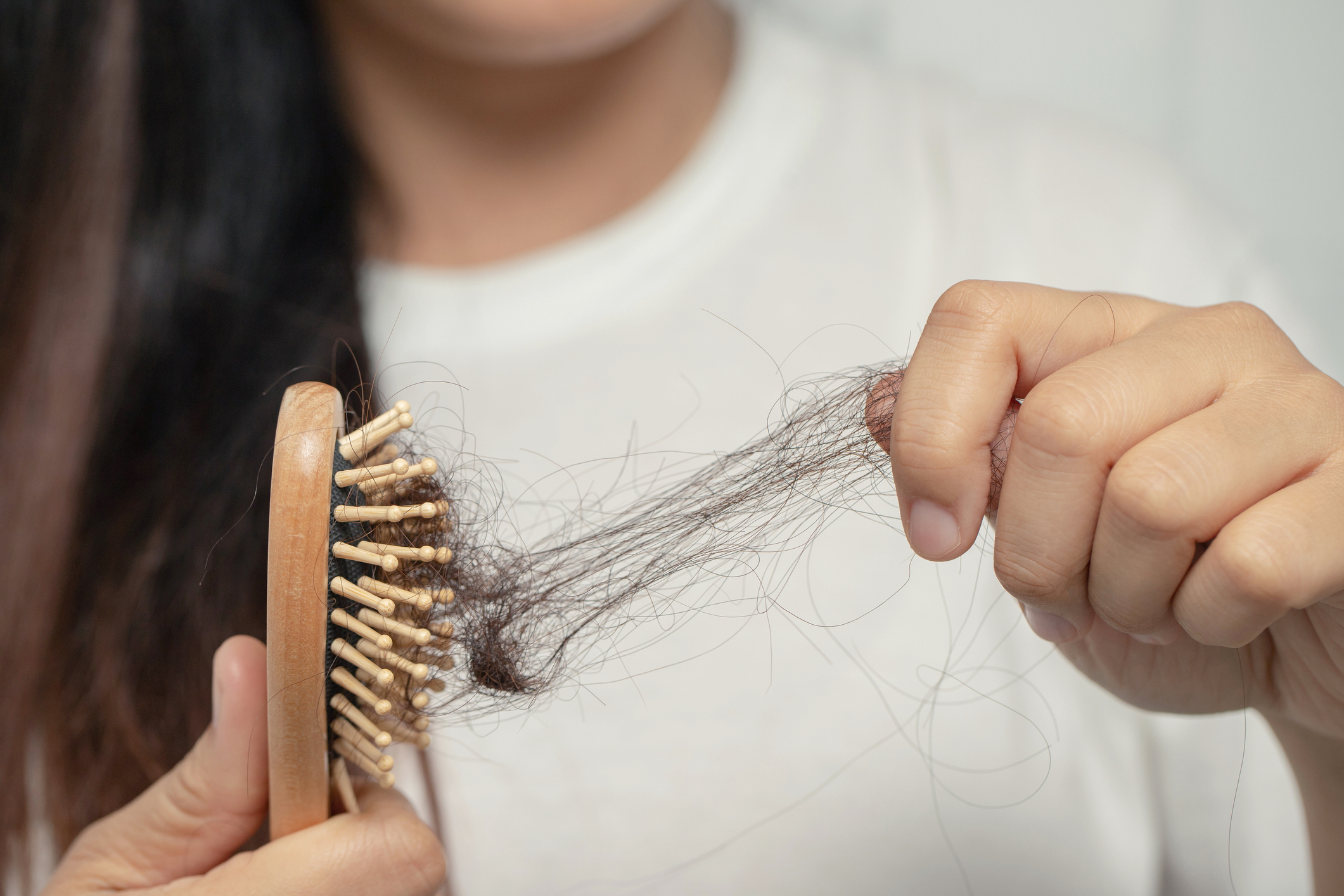Table Of Content

Furthermore, the effect size of the patients reporting a continued loss of smell was insignificant, indicating a progressive improvement in all chemosensory functions. Medical histories of the participants consisting of COVID-19 diagnosis dates and methods used to diagnose, such as antibody and polymerase chain reaction (PCR) tests, were obtained. Furthermore, since self-reports of loss of taste or smell can be inaccurate, there is a need to assess the occurrence of taste dysfunction in PCC quantitatively. However, the condition affects various organ systems, with severe cases involving cardiovascular and renal complications and neurological symptoms such as brain fog or inability to concentrate.
Authorship
Dermatologists have seen patients who have recovered from COVID and experienced hair loss faster than other instances of telogen effluvium – two months rather than three. While most experience hair regrowth, there are a few reported cases of chronic telogen effluvium, he said. Medications can be tricky, Perng explains, especially for patients with acute telogen effluvium. "A lot of times, we know these patients are going to recover spontaneously and on their own," he says.
Therapy dogs provide comfort to chemotherapy patients
People who become ill with COVID-19 can have a wide variety of symptoms. Hair loss has been reported in people who have recovered from COVID-19. The Centers for Disease Control and Prevention (CDC) notes hair loss as a potential long-term effect of COVID-19 that’s currently under investigation. A dermatologist is a medical doctor who specializes in treating the skin, hair, and nails. There are additional options to restore your hair after COVID-19, too, including oral medications. Some people also benefit from a process by which platelets are taken from their plasma and injected into their scalp to boost hair regeneration.
The state of your scalp changes after illness.
Can COVID-19 Cause Hair Loss? - Hackensack Meridian Health
Can COVID-19 Cause Hair Loss?.
Posted: Thu, 21 Apr 2022 07:00:00 GMT [source]
Thus, it is possible that severe cases may have been more likely to be reported, leading to selection bias. Another limitation is that there is a small number of observational studies with a relatively small participant numbers and multiple missing values, which decreases the quality of the data presented in their studies. Androgenetic alopecia and alopecia areata are other common forms of hair loss, but they both show up differently than the general shedding seen in telogen effluvium. Androgenic alopecia typically manifests as hairline recession or thinning on the crown, specifically. “This is the most common cause of localized hair loss and is often referred to as male or female pattern baldness,” Craig Ziering, MD, a board-certified dermatologist, hair transplant surgeon, and hair restoration specialist, tells SELF.
By the first visit, alopecia had spread gradually across the entire head (Figure 2). There were no significant abnormal findings in his laboratory tests other than abnormal serum zinc level or no signs of malnutrition, abnormal thyroid function, or adrenal insufficiency. The serum zinc level was slightly low (76 µg/dL) but not severe to merit supplementation as a deficiency. Coming to the case reports, most patients with hair loss were female, and TE was the predominant form, reported in three-quarters of the cases. While evidence exists of a clear connection between COVID-19 and sudden hair loss, telogen effluvium isn’t directly tied to the virus. Not everyone who is diagnosed with COVID will experience hair loss either.
Get the latest in health news delivered to your inbox!
Getting enough protein in your diet is essential as it provides the building blocks for proper hair growth; meat, tofu, eggs, beans, grains, nuts, and fish are all good protein sources. Some studies suggest that telogen effluvium can also be connected to low levels of iron, so include iron-rich foods like leafy vegetables, lentils and liver where you can. If you like the idea of adding supplements to your routine, there are some which are specifically formulated to contain ingredients that increase hair thickness and health.

Is hair loss associated with severe COVID-19?
While almost anything is possible, some less common symptoms of acute COVID-19 are included in the following list below. In addition, up to 20% to 30% of people will have prolonged symptoms that can be mild to severe that can last months. This is referred to as post-COVID syndrome or "long haul" COVID-19 symptoms. Hackensack Meridian Health doctors are seeing “a slew of patients” experiencing hair loss after COVID infection, reflecting larger trends, says dermatologist Alexis Young, M.D.
TE happens when a stressor causes a large amount of hair to stop growing and enter into the resting (telogen) phase. Certainly, experiencing an illness like COVID-19 can cause both physical and emotional stress. In fact, TE has also been observed in some people due to the stresses of quarantining.
1. Search results and study selection
Thus, there might have been either under‐ or over‐diagnosis of hair loss in COVID‐19 patients. Also, given that hair loss is a relatively common dermatologic finding, hair loss and COVID‐19 in the included cases might have occurred solely by chance. Also, because most of the included cases were diagnosed as TE based on clinical course without pathologic findings, the prevalence of TE could have been overestimated. Given the clinical variability and benign nature of hair loss, it is important to consider that patients may not have had access to or sought out dermatologic care.
The symptom of hair loss developed several weeks after the clinical manifestation of COVID-19. Di Landro et al. study reported that all patients had a normal range of iron, ferritin, vitamin B12, and thyroid function tests. However, their principal complaint was hair thinning and hair loss [13]. Therefore, it supports the hypothesis of post-COVID-19 complication, which is related to dermatological manifestation. Most patients had a severe disease that required hospitalization and systemic medications, which is consistent with our patients.
Which of them your doctor recommends will depend on the severity of your illness, and if you have health conditions that put you at risk of serious illness. Make an appointment with your doctor if you’re worried or distressed about your hair loss. There are several potential treatments that your doctor may recommend for hair loss depending on its cause. One of the potential triggers for TE is an acute illness with fever. People who’ve become ill with COVID-19 often experience fever as one of their symptoms.
Unexplained Weight Gain After COVID-19? Here's Why - Healthline
Unexplained Weight Gain After COVID-19? Here's Why.
Posted: Thu, 25 May 2023 07:00:00 GMT [source]
The participants largely represented the relative populations of 48 U.S. states and were recruited without specifying COVID-19 as a criterion in the recruitment advertisements. Healthy individuals were included in the study if they had no other disorder, such as a neurodegenerative disease or head trauma condition that could impact the ability to smell and taste. The COVID-19 pandemic has been successfully contained after the development of various vaccines and worldwide efforts to vaccinate large parts of the population. However, post-COVID-19 condition (PCC), commonly referred to as long coronavirus disease (long COVID), is an ongoing public health concern. While common triggering factors for TE are febrile disease, severe infection, and nutritional deficiencies, which are common in COVID-19 patients, it is worth evaluating the prevalence of TE.
And as we learn more about the coronavirus, he said, we may better understand the underlying causes behind these infrequent symptoms — but until then, it’s largely guesswork. The new coronavirus, SARS-CoV-2, is mainly transmitted through respiratory droplets. These can be produced when someone who has an infection coughs, sneezes, or talks. Less commonly, it’s spread through contact with contaminated surfaces. Researchers observed that a high amount of participants (67 percent) had androgenic alopecia. It’s important to note that there was no control group in the study.
The effluvium caused post the infection with SARS COV2 could be explained by the physiologic response of the follicles to the stress of the infection. After a fever-causing infection, the effluvium usually starts 3 to 4 months after the inciting infection. The cytokines released due to the infection/fever, prematurely push the follicles into catagen and then into telogen.
Increased psychological stress can have a positive impact on the progression of many skin conditions and can potentially lead to aggravating the underlying disease(s). This is especially true for hair loss, for which a wealth of literature reports can be due to psychological stress. Furthermore, hair loss can be stressful on its own, and that stress can exacerbate hair loss. This could be another cause of hair loss in persons who have recovered from COVID-19 [7,9]. Healthy people shed about 50 to 100 hairs every day, often without noticing. It’s part of a normal cycle in which hair follicles alternate between “resting” and active growth phases.
Second, because the data collected was based on an online survey, it may have some weaknesses, such as recall bias. The impact of hair loss on the quality of life was assessed using the Arabic version of the Dermatology Life Quality Index (DLQI) questionnaire. This questionnaire is self-explanatory and can be simply filled out by the respondents in one or two minutes. There are 10 questions in the DLQI designed to asses symptoms, feelings, personal relationships, leisure, work, school, daily activities, and treatment. Each question has four possible answers “very much” (score 3), “a lot” (score 2), “a little” (score 1), and “not at all” (score 0). The DLQI score is then calculated by summing the score of each question resulting in a maximum score of 30 and a minimum score of 0.

No comments:
Post a Comment